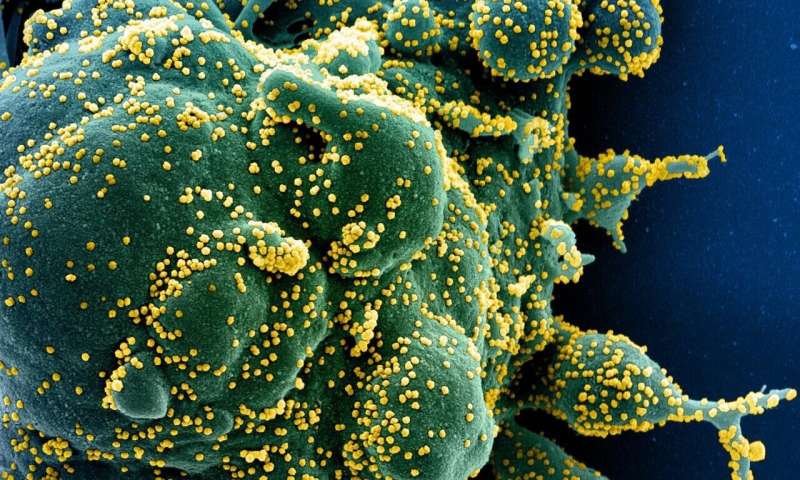Seroprevalence study finds number of people infected with SARS-CoV-2 in Iran may be higher than expected

A study tracking seroprevalence across Iran suggests that the number of people who have had the SARS-CoV-2 virus is 17.1% overall and 20.0% in high-risk occupations. The findings suggest that an estimated almost 4.3 million people across the 18 cities sampled were infected with the virus by the end of April 2020, compared with 800,000 clinically confirmed cases by November 2020 for the whole country (population 81.8 million). This discrepancy may reflect the fact that clinical cases pick up only the severe end of the disease spectrum, especially in the first wave when widespread testing was less common.
This is the first major seroprevalence study from the Middle East and is published inThe Lancet Infectious Diseases journal. Despite the high seroprevalence rates, the data suggests that there are still large swathes of the Iranian population who remain susceptible to the virus.
Seroprevalence data sheds light on the true rate of infection and may indicate the number of people with some degree of immunity, although it is still unknown to what extent previous infection with SARS-CoV-2 is protective and cases of re-infection have already been confirmed globally. It also gives an insight into infection spread as well as the success of public health campaigns, which could guide policy makers as Iran faces a second wave.
“We have found that although the overall rate of infection is higher in Iran than anticipated, it is still less than one-fifth of the population, indicating that much of the country is still vulnerable to SARS-CoV-2 infection,” says Professor Reza Malekzadeh, lead author from Tehran University of Medical Sciences, Iran. “We believe that antibody testing of individuals—including those in occupations at high-risk—should guide local public health decision making on lockdowns, PPE requirements and return-to-work policies.”
COVID-19 has caused over 1 million deaths and led to countless hospitalisations worldwide. After its detection in China, Iran was one of the first countries hit during the first wave of the coronavirus pandemic, with the first reported death in February 2020. Restrictions on mass gathering and closures of restaurants were implemented in February 2020, and were eased in April.
Data collection for the new study took place between 17 April and 2 June 2020 and included people from the general population as well as those in occupations with higher potential for exposure, such as supermarket cashiers, bank tellers and healthcare workers.
Participants were invited to take part in the study by telephone call. Blood samples were taken and serum was tested for SARS-CoV-2 antibodies. Participants were also interviewed about their demographic characteristics, such as age and sex, their exposure to COVID-19, any recent COVID-19 symptoms, and their medical history.
Of 8,902 participants, 3,530 were from the general population. The remaining participants (5,372/8,902) were from occupations with high risk of exposure to SARS-CoV-2.
The researchers asked participants to record if they had experienced COVID-19 symptoms to better gauge the relationship between symptoms and infection rate. Overall, 35.7% of cases positive for SARS-CoV-2 infection in the study reported that they had never developed symptoms, despite having antibodies for the virus.
After statistically adjusting for population size and the sensitivity of the serum test, seroprevalence positive rates among individuals who reported being a contact of a COVID-19 case were considerably higher (30.8%) compared to those without (14.0%).
Seroprevalence was found to vary widely between cities. The city with the lowest seroprevalence—Sanandaj—had a rate of 1.7% (N=193), compared with the cities of Qom and Rasht, which had seroprevalence rates in the general population of 58.5% (N=349) and 72.6% (N=244) respectively, after adjusting for population and test characteristics. For higher-risk occupations, this rate rose to 80.7% in Rasht.
The variation in prevalence estimates among the cities may be partly explained by the early implementation of health measures in some places. For instance, Qom reported a rise in cases very early in the epidemic, partly due to an ongoing trading relationship with Wuhan, China.
“We have seen a striking variation in antibody rates across areas within Iran, which underlines the importance of sampling across different geographical areas, and may provide an insight into how the virus spread through the country during the first wave. This indicates that different regions might require personalized public health strategies against SARS-CoV-2, meaning that one size does not fit all,” says, Dr. Maryam Darvishian, co-author from Cancer Control Research, Vancouver, Canada.
The seroprevalence rate reported in the new study for Iran is higher than that previously reported for the U.S., Switzerland, and Spain. This could be due to the timing of the outbreak in Iran, which was among the first countries that reported SARS-CoV-2 epidemic, potentially exposing a higher proportion of the population to the virus.
The authors caution that there are limitations to the study and individuals with history of COVID-19 symptoms may have been more willing to participate in the study. Further, the serum test kits used were not fully assessed prior to the study, and although the researchers carried out further validation checks and statistically adjusted the data to allow for test characteristics, the sensitivity of the test used is known to be low. In some cities, including Tehran, some parts of the high-risk population could not be recruited due to lockdown restrictions during data collection.
Source: Read Full Article
